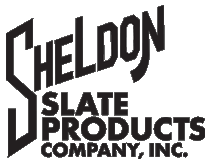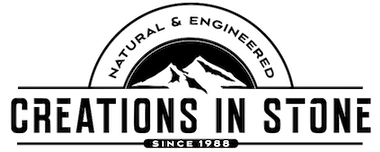Natural Stone
Granite: Granite has been valued for millennia for its beauty and durability. It was used in ancient Egypt to build pyramids and continues to grace today’s kitchen designs. It is a unique stone in both appearance and structure that continues to meet the demands of discerning homeowners. With minimal maintenance and hundreds of colors granite is one of the most popular countertop materials used to date.
Marble: Marble is an excellent material for bathrooms and kitchens. It offers a warm, classic look unparalleled by other stones. From modern to country-casual, marble can bring your room to another level. There are important factors when considering marble which include finish, texture, hardness and patina. Our professional staff can guide you through the process of deciding whether or not, marble is right for your project.
Soapstone: Soapstone has been used as a countertop material for centuries and continues to be a desired medium. Soapstone’s rich color and veining and non-porous surface makes it a natural pick. Farm sinks are fabricated from the same slab material as the counters, with pitched bottoms and recessed drains. Soapstone can be left natural, treated with mineral oil or a soapstone wax. There are approximately 6 different types of soapstone on display at all times, ranging from black to light shades of green and varying degrees of veining.
Travertine: Travertine is a form of limestone deposited by mineral springs. It tends to be neutral grey, tan or white making it a great choice to pair with tile for vanities and shower shelves, seats and caps. Travertine is available in vein-cut which shows a defined linear pattern or in cross-cut which gives the stone a soft swirl with slight color transition.
Serpentine: Serpentine has a look of marble yet is harder and less porous than many types of granite. It is a favorite of architects, designers and fabricators, and has been specified for interior and exterior use on numerous domestic and international projects since the early 1900s. Serpentine is available in honed, antiqued and polished finish.
Slate: Slate countertops can be used in kitchens and bathrooms. This versatile stone can be used as landscape material as well. With an extremely low absorption rate, slate is stain resistant and anti-bacterial. Scratches are easily rubbed out.
Quartzite: Quartzite is a very hard metamorphic rock that originated as sandstone. With a marble-like appearance and hardness similar to granite this material makes a good choice for any countertop. Quartzite will etch like a marble so considerations should be made regarding wear and patina.
Bluestone: Most commonly used for exterior caps, treads and steps, bluestone has a neutral blue-grey coloration that pairs well with many designs. Inside your home, bluestone can be used for hearths, mantels and other decorative tops.
Natural Stone Wholesale Partners:



Engineered stone
Quartz: Engineered stone is a composite material made of crushed stone bound together by an adhesive, (most commonly polymer resin, with some newer versions using cement mix). The two common stones used in producing these products are marble and quartz.
Partner Links:
Neolith – NeoLith is a revolutionary compact surface that combines high performance specs, trendy colors, large format and variable thicknesses that will provide solutions for every possible application (counter tops, flooring, bathrooms, paneling, cladding, facades).
NeoLith does not scratch, does not stain, is heat and fire resistant, and, thanks to the extremely low absorption rate of technical porcelain, ideal for food contact and processing.












